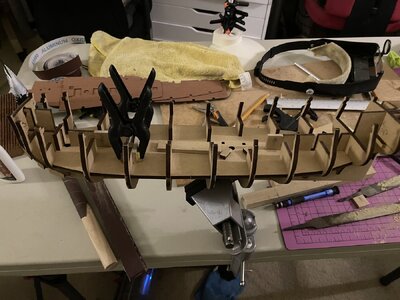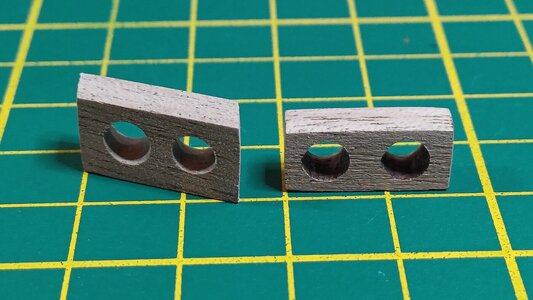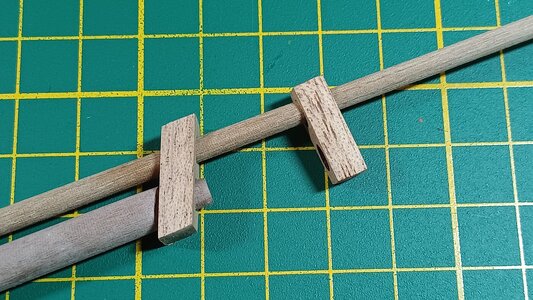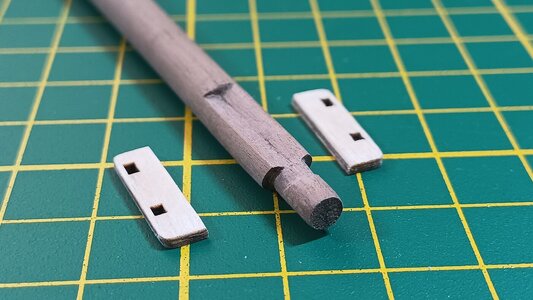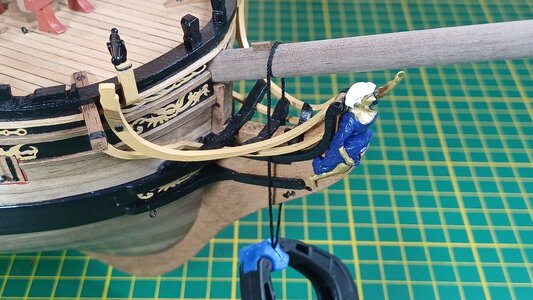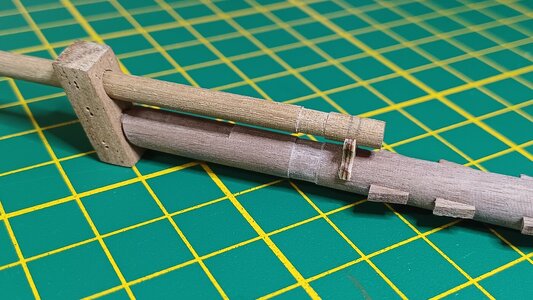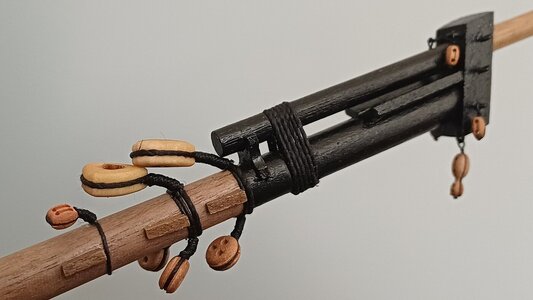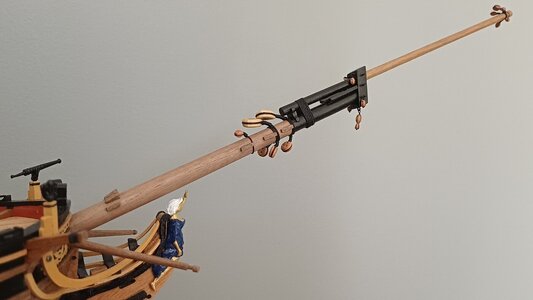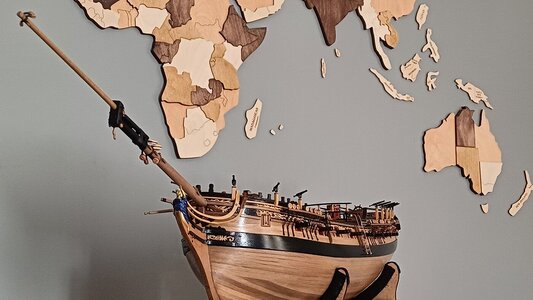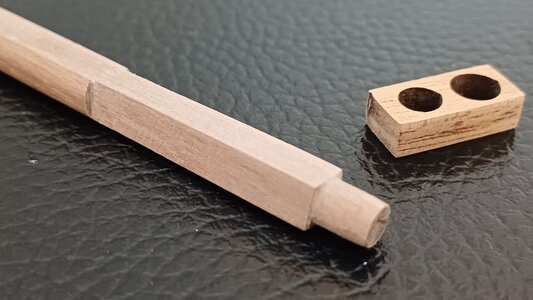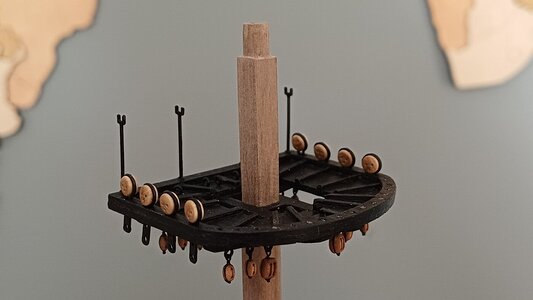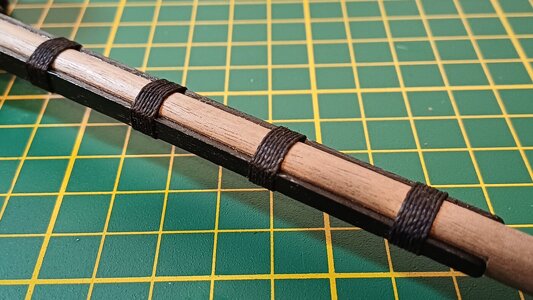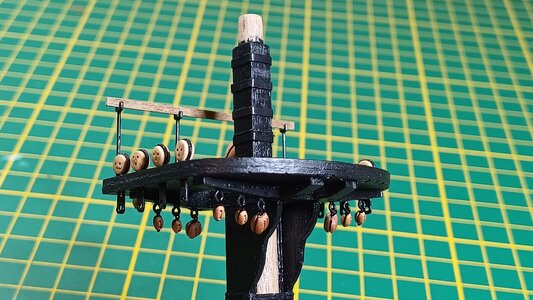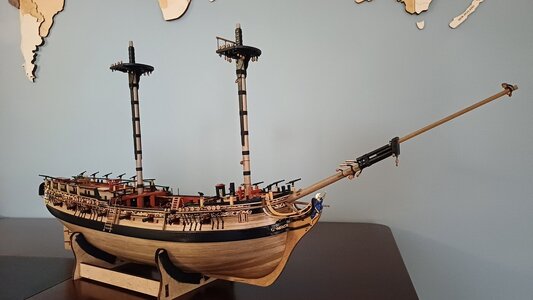A very nice long boat with a lot of nice details. Well done, Mark.I used the intermission between the hull and rigging efforts to assemble a small lifeboat that came with the Fly's upgrade kit. The hull was a metal affair and various lengths and shades of wood made up the bottom boards, thwarts and sternsheets.
View attachment 427311
The oars were decorated as per instructions, brown handles (rope in this instance), white shafts, and alluring copper guards for the tips.
View attachment 427312
A single kedge anchor and four boarding pikes, also painted to specification to emulate wooden shafts and iron tips.
View attachment 427313
The oars and pikes are bundled together, and, along with the anchor, bundled aboard and secured in the lifeboat.
View attachment 427314
The lifeboat will ulimately be lashed to a pair of spare topmasts and suspended in the open air above the waist. This is likely to interfere with the rigging at this stage and will be installed later on. Probably much, much later on, given the current level of my rigging skills and expertise
View attachment 427315
Thanks for checking in
Mark
Regards, Peter






